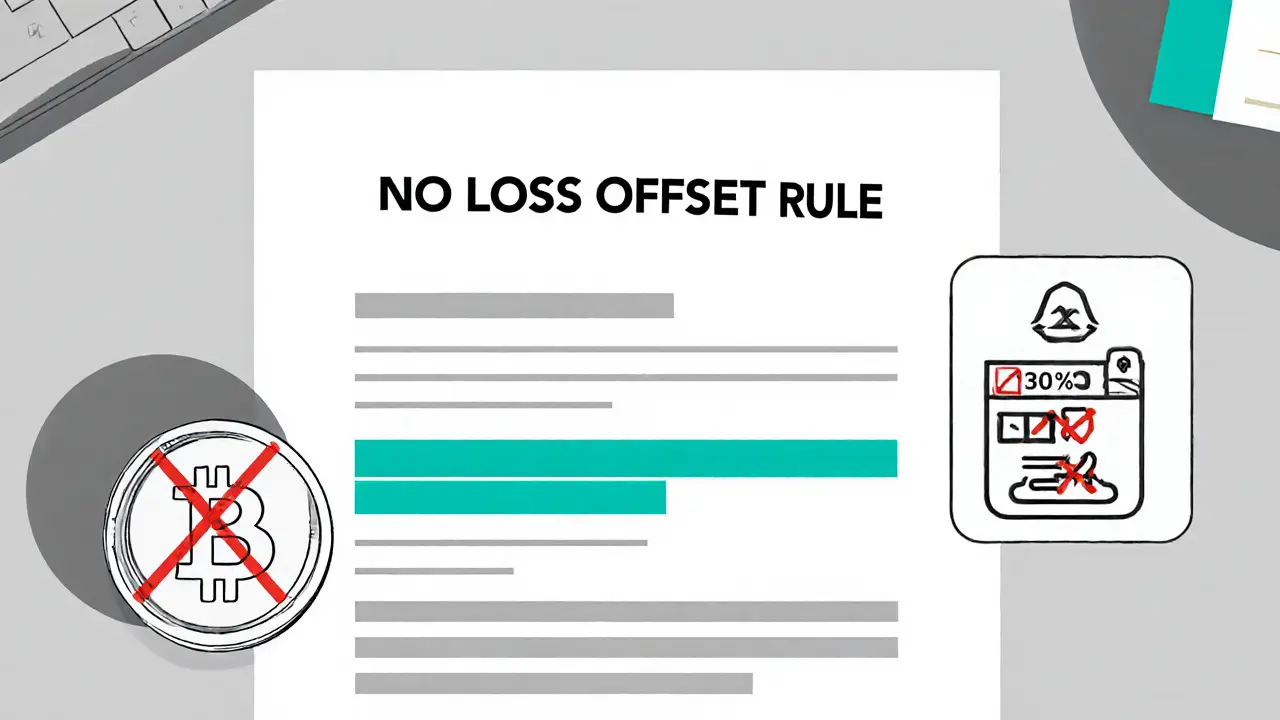No Loss Offset Rule Explained for Crypto Investors
When dealing with No Loss Offset Rule, a tax provision that prevents investors from using capital losses to reduce taxable gains. Also known as loss offset limitation, it plays a key role in crypto tax reporting and capital gains calculations. In plain terms, the rule says you can’t take a loss from one crypto transaction and apply it to offset a profit from another when the tax authority measures your net gain.
This rule directly influences tax reporting strategies. If you’re tracking Bitcoin, altcoins, or any token, you’ll need to separate the gains you can actually offset from the ones that stay fully taxable. That split can change your effective tax rate dramatically, especially in volatile markets where big swings are common. For example, a trader who sold ETH at a profit in March but incurred a loss on a DeFi token in April can’t combine those figures to lower the March tax bill. The rule forces a clear line: each tax period must account for gains and losses independently, unless the jurisdiction explicitly allows loss carry‑forward or other exceptions.
Why the Rule Matters for Crypto Investors
Understanding the no loss offset rule is essential because it shapes how you plan your portfolio moves. If you know the limitation ahead of time, you might choose to realize losses strategically before year‑end, or use tax‑advantaged accounts where the rule doesn’t apply. It also affects how you record transactions in your tracking spreadsheet or tax software—every buy, sell, swap, and airdrop needs a precise cost basis. Missing a single event can lead to an inaccurate loss calculation and a higher tax bill. The rule interacts with other concepts like short‑term versus long‑term gains, the 28% tax rate some European countries apply to crypto, and special provisions for airdrop tokens that may be classified as ordinary income.
Below you’ll find articles that break down the rule from different angles: from practical guides on calculating crypto capital gains, to deep dives on how the rule plays out in specific jurisdictions, to stories about how it affects airdrop participants and DeFi traders. Use these resources to build a solid tax plan that respects the no loss offset rule while still letting you make the most of market opportunities.

India's No Loss Offset Rule: How It Impacts Crypto Traders
Explore India's no loss offset rule, its 30% crypto tax impact, compliance challenges, and strategies for traders to navigate the stringent regime.
